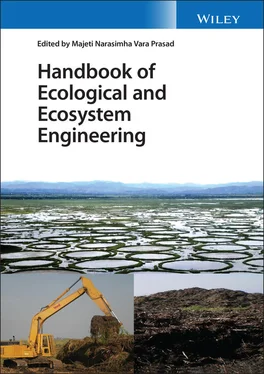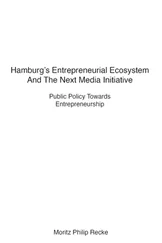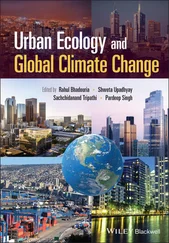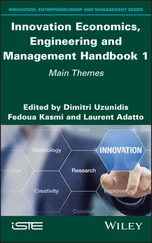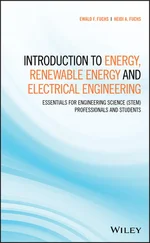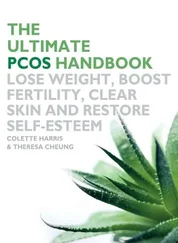82 82 Gao, B., Zhang, X., Tian, C. et al. (2019). Effects of amendments and aided phytostabilization of an energy crop on the metal availability and leaching in mine tailings using a pot test. Environ. Sci. Pollut. Res. 27: 2745–2759.
83 83 Hamidpour, M., Nemati, H., Abbaszadeh‐Dahaji, P., and Roosta, H.R. (2019). Effects of plant growth‐promoting bacteria on EDTA‐assisted phytostabilization of heavy metals in a contaminated calcareous soil. Environ. Geochem. Health: 3. https://doi.org/10.1007/s10653‐019‐00422‐3.
84 84 Von Cossel, M., Lewandowski, I., Elbersen, B. et al. (2019). Marginal agricultural land low‐input systems for biomass production. Energies 12: 3123.
85 85 Von Cossel, M., Wagner, M., Lask, J. et al. (2019). Prospects of bioenergy cropping systems for a more social‐ecologically sound bioeconomy. Agronomy 9: 605.
86 86 Cordeiro, C.F.S. and Echer, F.R. (2019). Interactive effects of nitrogen‐fixing bacteria inoculation and nitrogen fertilization on soybean yield in unfavorable edaphoclimatic environments. Sci. Rep. 9: 1–11.
87 87 Yang, L., Yang, Y., Chen, Z. et al. (2014). Influence of super absorbent polymer on soil water retention, seed germination and plant survivals for rocky slopes eco‐engineering. Ecol. Eng. 62: 27–32.
88 88 Khodadadi‐Dehkordi, D. (2016). The effects of superabsorbent polymers on soils and plants. Pertanika J. Trop. Agric. Sci. 39: 267–298.
89 89 Cosentino, S.L., Copani, V., Scalici, G. et al. (2015). Soil erosion mitigation by perennial species under Mediterranean environment. Bioenergy Res. 8: 1538–1547.
90 90 Singh, A.K. (2010). Bioengineering techniques of slope stabilization and landslide mitigation. Disaster Prev. Manag. 19: 384–397.
91 91 Cantalice, J.R.B., Nunes, E.O.S., Cavalcante, D.M. et al. (2019). Vegetative‐hydraulic parameters generated by agricultural crops for laminar flows under a semi‐arid environment of Pernambuco, Brazil. Ecol. Indic. 106: 105496.
92 92 Buxton, D.R. (1996). Quality‐related characteristics of forages as influenced by plant environment and agronomic factors. Anim. Feed Sci. Technol. 59: 37–49.
93 93 Deléglise, C., Meisser, M., Mosimann, E. et al. (2015). Drought‐induced shifts in plants traits, yields and nutritive value under realistic grazing and mowing managements in a mountain grassland. Agric. Ecosyst. Environ. 213: 94–104.
94 94 Scordia, D., Testa, G., Cosentino, S.L. et al. (2015). Soil water effect on crop growth, leaf gas exchange, water and radiation use efficiency of Saccharum spontaneum L. Ssp. aegyptiacum (willd.). hackel in semi‐arid Mediterranean environment. Ital. J. Agron. 10: 185–191.
95 95 Wilmowicz, E., Kućko, A., Burchardt, S., and Przywieczerski, T. (2019). Molecular and hormonal aspects of drought‐triggered flower shedding in yellow lupine. Int. J. Mol. Sci. 20: 3731.
96 96 Blum, A., Johnson, J.W., Ramseur, E.L., and Tollner, E.W. (1991). The effect of a drying top soil and a possible non‐hydraulic root signal on wheat growth and yield. J. Exp. Bot. 42: 1225–1231.
97 97 Arkhipova, T.N., Prinsen, E., Veselov, S.U. et al. (2007). Cytokinin producing bacteria enhance plant growth in drying soil. Plant Soil 292: 305–315.
98 98 Scordia, D. and Cosentino, S.L. (2019). Perennial energy grasses: resilient crops in a changing European agriculture. Agriculture 9: 169.
99 99 Zegada‐Lizarazu, W., Salvi, S., and Monti, A. (2020). Assessment of mutagenized giant reed clones for yield, drought resistance and biomass quality. Biomass Bioenergy 134: 105501.
100 100 Haworth, M., Marino, G., Riggi, E. et al. (2019). The effect of summer drought on the yield of Arundo donax is reduced by the retention of photosynthetic capacity and leaf growth later in the growing season. Ann. Bot. 124: 567–579.
101 101 Cosentino, S.L., Scordia, D., Sanzone, E. et al. (2014). Response of giant reed (Arundo donax L.). to nitrogen fertilization and soil water availability in semi‐arid Mediterranean environment. Eur. J. Agron. 60: 22–32.
102 102 Zegada‐Lizarazu, W. and Monti, A. (2019). Deep root growth, ABA adjustments and root water uptake response to soil water deficit in giant reed. Ann. Bot. 124: 605–615.
103 103 Cosentino, S.L., Copani, V., Testa, G., and Scordia, D. (2015). Saccharum spontaneum L. ssp. aegyptiacum (Willd.). Hack. a potential perennial grass for biomass production in marginal land in semi‐arid Mediterranean environment. Ind. Crop. Prod. 75: 93–102.
104 104 Scordia, D., Testa, G., Copani, V. et al. (2017). Lignocellulosic biomass production of Mediterranean wild accessions (Oryzopsis miliacea, Cymbopogon hirtus, Sorghum halepense and Saccharum spontaneum) in a semi‐arid environment. Field Crops Res. 214: 56–65.
105 105 Dąbrowski, P., Baczewska‐Dąbrowska, A.H., Kalaji, H.M. et al. (2019). Exploration of chlorophyll a fluorescence and plant gas exchange parameters as indicators of drought tolerance in perennial ryegrass. Sensors 19: 2736.
106 106 Taylor, G., Donnison, I.S., Murphy‐Bokern, D. et al. (2019). Sustainable bioenergy for climate mitigation: developing drought‐tolerant trees and grasses. Ann. Bot. 124: 513–520.
107 107 Zhang, Y., Chen, Y., Lu, H. et al. (2016). Growth, lint yield and changes in physiological attributes of cotton under temporal waterlogging. Field Crops Res. 194: 83–93.
108 108 Muhammad, A.A. (2012). Waterlogging stress in plants: a review. Afr. J. Agric. Res. 7: 1976–1981.
109 109 Arguello, M.N., Mason, R.E., Roberts, T.L. et al. (2016). Performance of soft red winter wheat subjected to field soil waterlogging: grain yield and yield components. Field Crops Res. 194: 57–64.
110 110 Colmer, T.D. and Flowers, T.J. (2008). Flooding tolerance in halophytes. New Phytol. 179: 964–974.
111 111 McDonald, M.P., Galwey, N.W., and Colmer, T.D. (2002). Similarity and diversity in adventitious root anatomy as related to root aeration among a range of wetland and dryland grass species. Plant Cell Environ. 25: 441–451.
112 112 Akhtar, I. and Nazir, N. (2013). Effect of waterlogging and drought stress in plants. Int. J. Water Res. Environ. Sci. 2: 34–40.
113 113 Kadam, S., Abril, A., Dhanapal, A.P. et al. (2017). Characterization and regulation of aquaporin genes of Sorghum [Sorghum bicolor (L.). Moench] in response to waterlogging stress. Front. Plant Sci. 8: 1–14.
114 114 Liu, M. and Jiang, Y. (2015). Genotypic variation in growth and metabolic responses of perennial ryegrass exposed to short‐term waterlogging and submergence stress. Plant Physiol. Biochem. 95: 57–64.
115 115 Pompeiano, A., Reyes, T.H., Moles, T.M. et al. (2019). Photosynthetic and growth responses of Arundo donax L. plantlets under different oxygen deficiency stresses and reoxygenation. Front. Plant Sci. 10: 408.
116 116 Quinn, L.D., Straker, K.C., Guo, J. et al. (2015). Stress‐tolerant feedstocks for sustainable bioenergy production on marginal land. Bioenergy Res. 8: 1081–1100.
117 117 Martins, A.P., Denardin, L.G.O., Tiecher, T. et al. (2020). Nine‐year impact of grazing management on soil acidity and aluminum speciation and fractionation in a long‐term no‐till integrated crop‐livestock system in the subtropics. Geoderma 359: 113986.
118 118 Niu, H., Leng, Y., Ran, S. et al. (2020). Toxicity of soil labile aluminum fractions and aluminum species in soil water extracts on the rhizosphere bacterial community of tall fescue. Ecotoxicol. Environ. Saf. 187: 109828.
119 119 Zhao, X.Q., Chen, R.F., and Shen, R.F. (2014). Coadaptation of plants to multiple stresses in acidic soils. Soil Sci. 179: 503–513.
120 120 Ashraf, S., Dixit, S., Ramteke, P.W., and Rizvi, A.Z. (2019). Interactive role of brassinosteroids and calcium ameliorates in response to the aluminium toxicity in plants. Int. J. Trend Sci. Res. Dev. 3: 183–203.
Читать дальше
